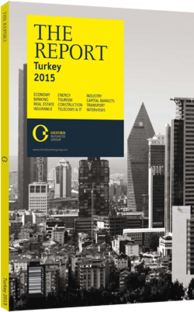Mark Lewis, Former Senior Resident Representative in Turkey, International Monetary Fund: Interview

Interview: Mark Lewis
What are the Turkish economy’s key strengths?
MARK LEWIS: In addition to the obvious factors, like demographics and geography, Turkey’s private sector is very dynamic and has demonstrated an ability to quickly adapt to changes in the global economy through adjustments to products, target markets and size. In addition, the country’s balance sheets are generally strong, especially with respect to the public and banking sectors. This strength provides resilience to shocks and is one of the reasons Turkey was able to ride through the recent economic crisis relatively unscathed.
However, there are potential weaknesses, notably for corporations and households that are more exposed to financial risks than the two sectors above. Foreign exchange (FX) risk has grown over the past few years as more firms have turned to foreign-denominated debt to fund business. While some entities are hedged, others are not, making many companies vulnerable to exchange rate depreciation. Corporations also have some interest rate risk and rollover risk, as a result of short maturities. While these risks are not that high, they have been growing and need to be closely monitored. Households are generally in a better position, as a group. There is very little FX risk, and interest rate and rollover risks are much lower than for corporations. Aggregate household financial assets are solid – 20% higher than liabilities. That said, those with the assets are not necessarily the same that hold the liabilities, creating pockets of vulnerability among certain segments. Some middle- and lower-income households may be overextended, resulting in high levels of consumer debt. While the government’s consumer lending and credit card regulations have been reasonably effective at containing excesses, more may be needed.
To what extent does the sizeable current account deficit (CAD) pose a risk to economic stability?
LEWIS: For 2014 we are forecasting a decline in the CAD to 6.3% of GDP from 7.9% in 2013, due primarily to an expected slowdown in overall GDP growth. Despite this decrease, Turkey’s deficit remains considerably higher than those in many other emerging markets. The size of a CAD is less important than the ability of a country to finance it. Over the past few years, emerging markets have benefitted from high global liquidity because of loose monetary policies in the West. As a result, they have been able to easily finance their deficits. In Turkey’s case, this has been financed with short-term foreign debt. However, as the US has begun to move towards a normalisation of its financial conditions, global capital inflows have slowed. For a country like Turkey, where inflows fuel a large amount of domestic consumption and investment, an abrupt decline in international funding would result in a sharp slowdown in the economy. While the country has not yet experienced any significant problems attracting these income sources, it will remain vulnerable to capital flow volatility as long as the CAD remains at its present level.
How can Turkey work to overcome its CAD risks?
LEWIS: One way to deal with this risk is by boosting the country’s domestic savings rate, which at about 12% of GDP is lower than in comparable markets. Increasing this figure by 4% to 5% over the long term would allow Turkey to finance more of its growth with its own savings, as opposed to those of foreign countries. This would reduce Turkey’s exposure to foreign capital flows and, by allowing a larger amount of investment, would lead to higher growth. The government’s overhaul of the pension system was one step in the right direction. Interest rates also play a role in encouraging savings, especially when they are at a level enticing to savers, but not too stimulative of consumption. And, while public sector finances have seen steady improvement over the past few years, their continued strengthening would help to raise the country’s overall savings rate. The other major solution lies with improving Turkey’s overall competitiveness. If its exports were more competitive globally and its domestic goods were more competitive with imports, this would reduce the CAD.
You have reached the limit of premium articles you can view for free.
Choose from the options below to purchase print or digital editions of our Reports. You can also purchase a website subscription giving you unlimited access to all of our Reports online for 12 months.
If you have already purchased this Report or have a website subscription, please login to continue.

